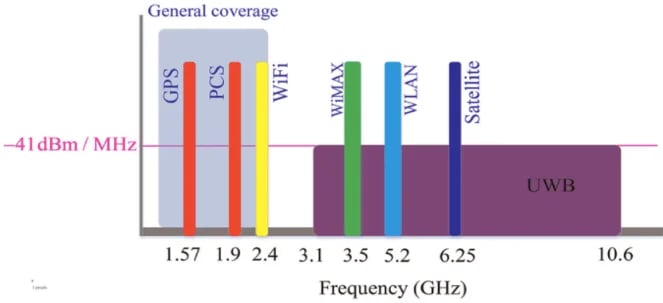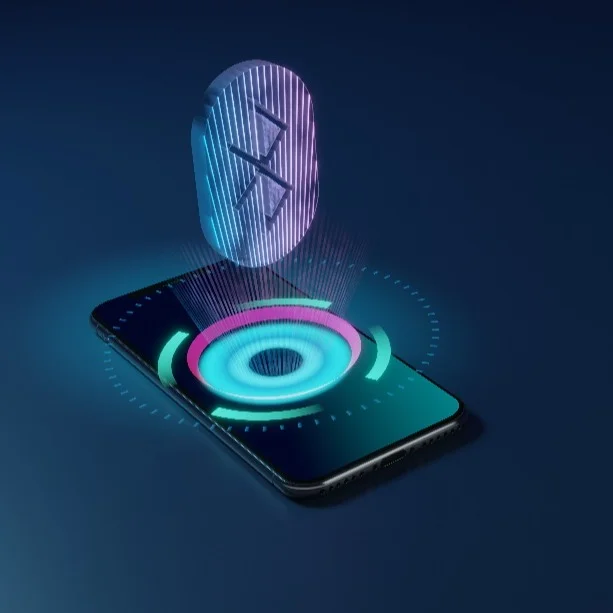Current Real-Time Location Systems (RTLS) are constantly improving. Sometimes, operations leaders can get overwhelmed with all the options. One of those options is Ultra-Wideband (UWB) sensor technology. Due to the popularity of the latest Apple and Samsung cell phones, most people are familiar with the term. However, they are not necessarily sure how UWB compares and contrasts with Bluetooth Low Energy (BLE). Although companies have been using BLE to track assets for many years, UWB is now an up-and-coming technology for connecting devices over short distances with unprecedented accuracy. According to MarketsandMarkets, “Ultra-Wideband will be worth 2.7 billion by 2025, with a CAGR of 19.6%.” So, the question many people are asking is, “Will UWB replace BLE”? To answer that question, we first must understand what Ultra-Wideband and BLE are and how they work.
What is UWB?
UWB is a continuously scanning radar that operates through a wide range of low-powered radio frequencies. This short-range, wireless system uses a bandwidth of at least 500 Mhz. More specifically, UWB has unlocked a range of radio frequencies from 3.1 to 10.6 GHz. Some might wonder, “That range is great, but won’t it interfere with other technologies that operate within that range?” The answer is no. The key to this ‘no interference’ comes from the low amount of power that UWB operates on. As seen in the diagram below, the most power UWB uses is -41.3 dBm/MHz. Due to the low amount of power, UWB devices work best when they are close to each other and the line of sight is clear of obstacles.
Although UWB can predict the relative position and motion of assets within 10-30 centimeters, its most important feature is communicating and transitioning of data from one device to another. Because of the enormous bandwidth, UWB has shown to transmit 110Mbit/sec. That is enough to share three video streams over one connection at the same time.

How does UWB work?
UWB works by continuously scanning radar that operates through a wide range of low-powered radio waves. In truth, there are two ways that UWB can position assets: Time Difference of Arrival (TDoA) and Two Way Ranging (TWR). With TDoA, tags send radio signals at regular intervals to several different anchor synchronized sensors. After tags transmit data to anchors within the communication range, those anchors transmit the data to a central RTLS server and then calculates the time differences of arrival. The server takes the timestamps from at least four anchors and calculates the location of the tag. TWR works differently. TWR relies on ranging between a single tag and anchor. This method is complicated because TWR requires nine messages to travel back and forth to calculate a location. Most companies that pick UWB to track their assets use TDoA technology because the lower energy usage allows the batteries on the tags to last longer.
What is BLE?
To understand Bluetooth Low Energy, one must first understand Bluetooth technology. In a sentence, Bluetooth is a frequency-hopping radio technology that transmits data in packets. Information travels within the 2.4 GHz band. Although BLE is similar to its parent technology, they have very different uses. Bluetooth is known for things like file transfers or wireless headsets, keyboards, and speakers. BLE is used more for industrial monitoring, blood pressure monitoring, geography-based targeted promotions, or public transportation apps. The difference between Bluetooth and BLE is the amount of power used. Unlike classic Bluetooth, BLE remains in sleep mode until the system initiates a connection. The actual connection times are only a few mS, whereas Bluetooth takes ~100mS. With Bluetooth Low Energy, a single battery could last as long as five years. Bluetooth devices have a maximum communication range of 30. (assuming no obstacles are blocking the path). However, with one antenna, BLE could be extended as far as 77 meters.
How does BLE work?
Bluetooth transmits data within the 2.4 GHz band. However, if you know anything about the 2.4 GHz band, you know that many other technologies, such as WiFi and ZigBee, use the same 2.4 GHz band. So how do Bluetooth devices avoid interference? The answer is short-range frequency hopping. Bluetooth operates within 80 different channels (numbered from 0 to 79, each 1 MHz wide) and changes channels up to 1600 times per second. Bluetooth devices detect other signals and negotiate a path for communication.
With traditional BLE asset tracking, BLE beacons determine proximity, not location. When an active tag is within range, a nearby beacon can compute the signal strength and calculate the proximity to the beacon. The only way to increase the accuracy is to increase the density of beacons in an area. The more data inputs there are to the location algorithm, the higher the precision will be. This allows for “Just-Right Precision” in determining how many beacons to use in an infrastructure setting.
New patented technology by Link Labs adds phase-ranging to standard BLE tags. AirFinder OnSite uses BLE tags with new firmware to add phase-ranging for determining accuracy up to sub-meter level. This now combines the low costs of BLE with accuracy closer to UWB levels.
Advantages vs. Disadvantages
|
UWB advantages |
BLE advantages |
|
Accurate within 10 cm |
Low energy consumption - some tags can last up to 5 years |
|
High transmission rates |
Low maintenance - batteries don't need to be replaced often |
|
Low deployment costs |
|
UWB Disadvantages |
BLE Disadvantages |
|
Intensive installation |
Not as precise - up to sub-meter instead of centimeters |
|
High energy consumption |
|
|
High maintenance |
|
|
High deployment costs |
|
Which technology is best?
Both technologies have their advantages and disadvantages. Determining whether to use UWB or Bluetooth depends on the use case you’re trying to solve. To discuss which technology is the best for your company, please reach out to one of our Link-Labs experts…




